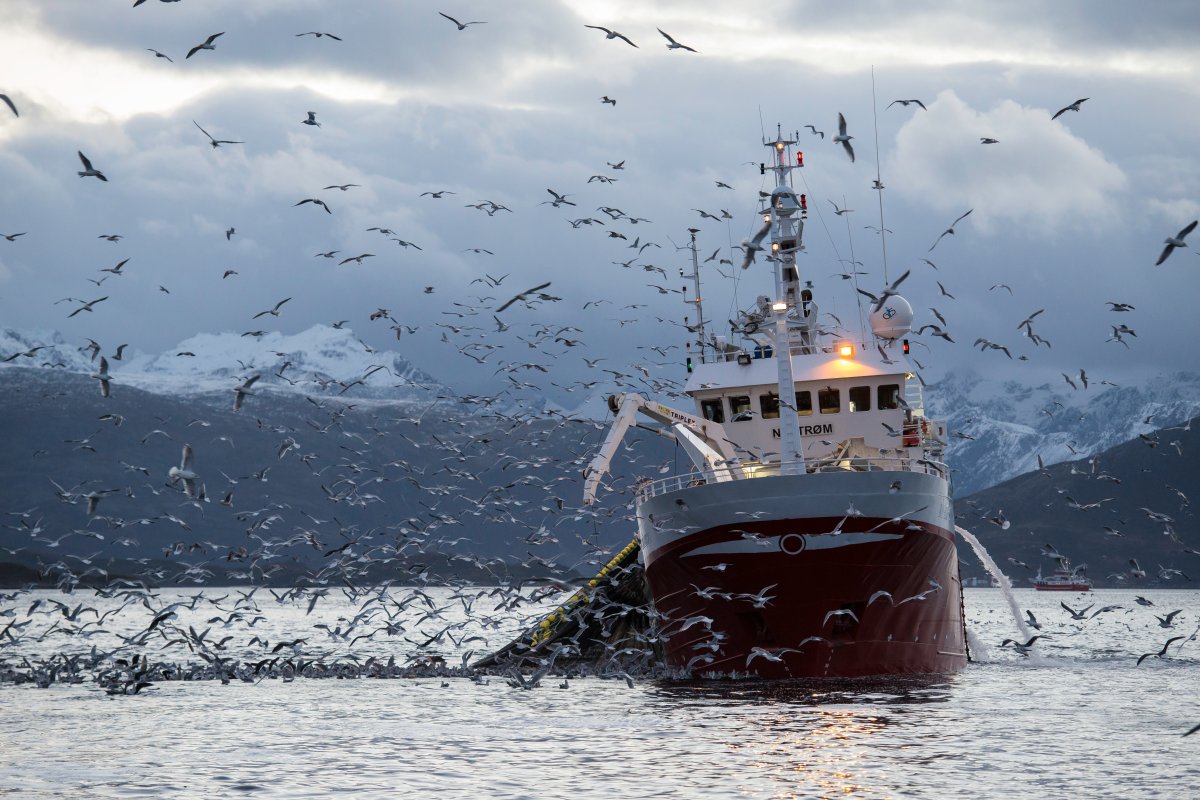It is a phenomenon that happens far from shore, with fishing boats transferring their catches to large, refrigerated ships that carry the lucrative haul back to ports for distribution around the world.

The practice – known as transshipment – has for decades operated in the shadows, largely beyond the reach of prying eyes and national jurisdiction.
But researchers using surveillance technology that can peer down on vessels from space have for the first time shed light on the extent and locations of transshipments, an innovation going back to the 1960s that has also been linked to illegal fishing, drug smuggling and human rights abuses.
Their report, published Wednesday in Science Advances, identified global hotspots where transshipments appear to be occurring most frequently and helps fill in the blanks of what happens to a fish from the time it is caught all the way to when it ends up on the dinner table.
“This is cutting edge technology and we’re trying to piece together where that fish was caught to the plate,” Boris Worm, a marine biologist at Dalhousie University in Halifax and co-author of the report, said in an interview Wednesday.
“What we’re trying to do with this technology is bring more scrutiny to this trade.”
READ MORE: The world has an unsustainable appetite for fish, UN warns
Worm said researchers analyzed data collected through satellite identification systems, which could pinpoint the regions where suspected transshipments were taking place and also what species were involved.
They found that between 2012 and 2017, there were 501 encounters with 1,856 fishing vessels and refrigerated cargo ships – known as reefers – in 10,510 likely transshipment events worldwide. Many occurred in the so-called hotspots off West Africa, the tropical Pacific and Russia, which has the largest number of reefers.
Most of the transshipments involved trawlers and longliners, with the most common catches being sharks, tuna and billfishes. Other species, like salmon and crustaceans, are also transferred at sea, the study says. It found that 35 per cent of the transshipments took place on the high seas, while the remainder occurred in exclusive economic zones, where most global fishing happens.
The data found that the average transshipment took about 11 hours, with fishing vessels transferring their catches about once a month.
The paper notes that most of the world’s seafood catches – 100 million metric tons a year – are landed in port directly by fishing boats operating in coastal or national waters. But, it warns that transshipment can allow fish caught illegally to be mixed with legal catches, obscuring their origins.
“Fish from different origins, and different species and different legal status are all mixed together, so you may have legally caught fish mixed with unsustainable fish,” he said.
“Sometimes we’re made to think it’s sustainable, but in reality often that information is not factual.”
Worm said that while transshipment is not illegal and can reduce fuel costs for vessels that can unload their catches at sea without having to go back into port, it can also lead to human rights abuses and the transfer of illicit goods.
The practice allows fishing vessels to stay out at sea for months, raising the possibility of workplace abuses.
“People are held at sea for months or years at a time,” Worm said.
“They’re essentially held captive at sea. It’s horrific.”
WATCH: MNR cracks down on illegal fishing in the Kawarthas

Worm said the Automatic Identification System technology used in his research should be used more widely to provide greater oversight of what is being caught and where it is being landed.
He said part of the problem is that there is a regulatory patchwork when it comes to oversight and enforcement of illegal fishing practices and transshipment. Canada uses a vessel monitoring system to track transshipments, while some countries like Thailand and Indonesia ban or suspend the practice in their waters.
The technology also provided a glimpse into the supply chain odyssey of tuna transhipped to reefers flagged to China, Taiwan and Panama. It found it took about six months from the catch of the albacore tuna to having a final canned product on the shelf. The tuna travelled thousands of kilometres to reach its final destination.
“The fish changes hands three to four to five times, it’s travelling an average of 17,000 kilometres and that process can take half a year,” he said. “So these fish are well travelled they’re not exactly fresh and it changes hands many, many times so there is a traceability problem here that we need to address.”




Comments